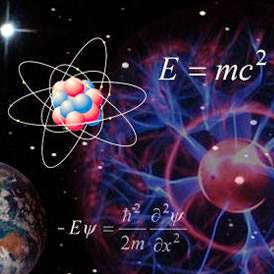 |
| Fade to black: a type 1a supernova remnant as seen by the Hubble Space Telescope and the Chandra X-ray Observatory. (Courtesy: NASA) |
Topics: Astrophysics, Black Holes, Cosmology, Dark Matter
Primordial black holes do not account for all dark matter, according to new research by Miguel Zumalacárregui and Uroš Seljak at the University of California, Berkeley. The duo has made the best measurement yet of the abundance of black holes in the cosmos by measuring the gravitational lensing of light from type 1a supernovae. Their study puts an upper limit of 40% on how much dark matter can be accounted for by primordial black holes.
For decades, physicists have grappled with growing evidence that the formation and dynamics of galaxies and larger structures in the universe are governed by gravitational forces from unseen dark matter. While the mysterious substance appears to account for about 85% of all matter in the universe, dark-matter particles have yet to detected directly.
Abstract
The nature of dark matter (DM) remains unknown despite very precise knowledge of its abundance in the Universe. An alternative to new elementary particles postulates DM as made of macroscopic compact halo objects (MACHO) such as black holes formed in the very early Universe. Stellar-mass primordial black holes (PBHs) are subject to less robust constraints than other mass ranges and might be connected to gravitational-wave signals detected by the Laser Interferometer Gravitational-Wave Observatory (LIGO). New methods are therefore necessary to constrain the viability of compact objects as a DM candidate. Here we report bounds on the abundance of compact objects from gravitational lensing of type Ia supernovae (SNe). Current SNe data sets constrain compact objects to represent less than 35.2% (Joint Lightcurve Analysis) and 37.2% (Union 2.1) of the total matter content in the Universe, at 95% confidence level. The results are valid for masses larger than ∼ 0.01 M⊙ (solar masses), limited by the size SNe relative to the lens Einstein radius. We demonstrate the mass range of the constraints by computing magnification probabilities for realistic SNe sizes and different values of the PBH mass. Our bounds are sensitive to the total abundance of compact objects with M ≳ 0.01 M⊙ and complementary to other observational tests. These results are robust against cosmological parameters, outlier rejection, correlated noise, and selection bias. PBHs and other MACHOs are therefore ruled out as the dominant form of DM for objects associated to LIGO gravitational wave detections. These bounds constrain early-Universe models that predict stellar-mass PBH production and strengthen the case for lighter forms of DM, including new elementary particles.
Supernovae reveal that primordial black holes cannot account for all dark matter
Sam Jarman, Physics World

No comments:
Post a Comment